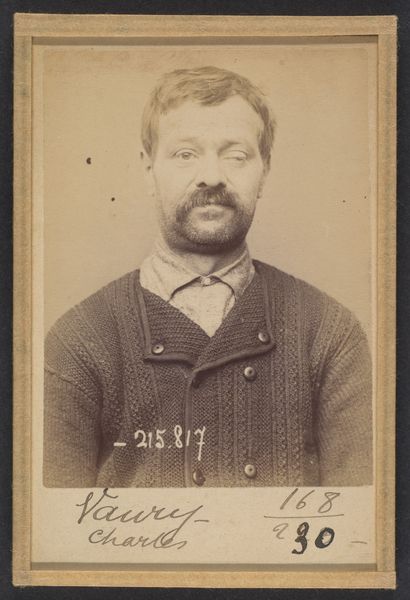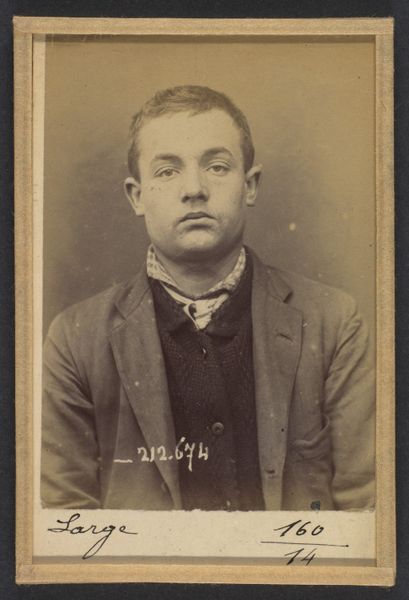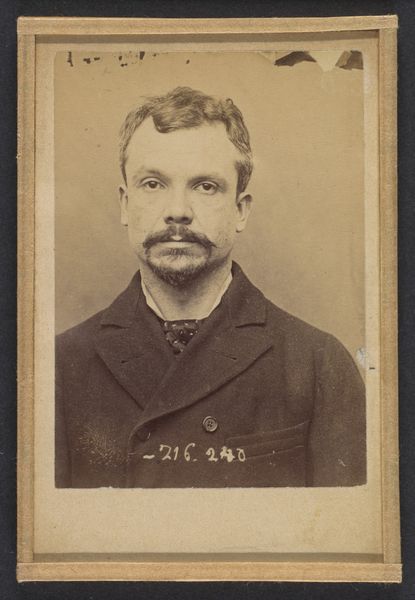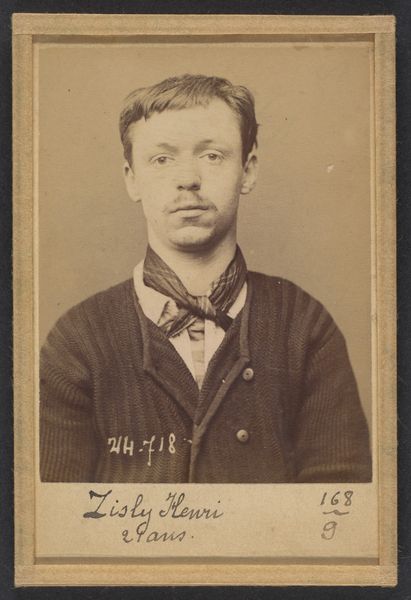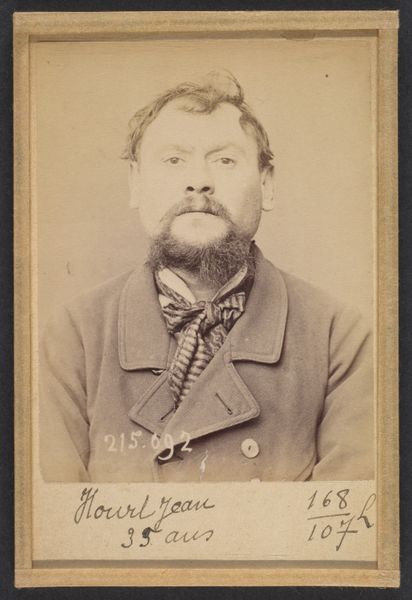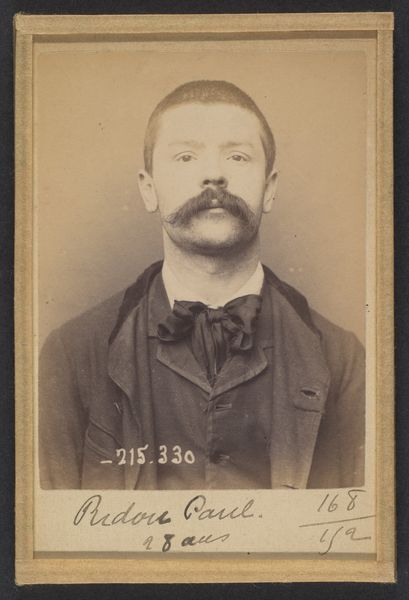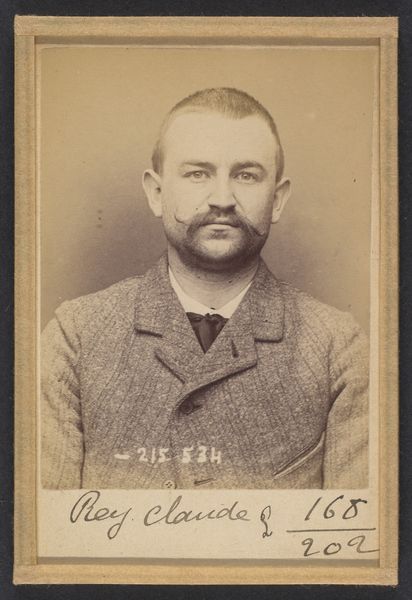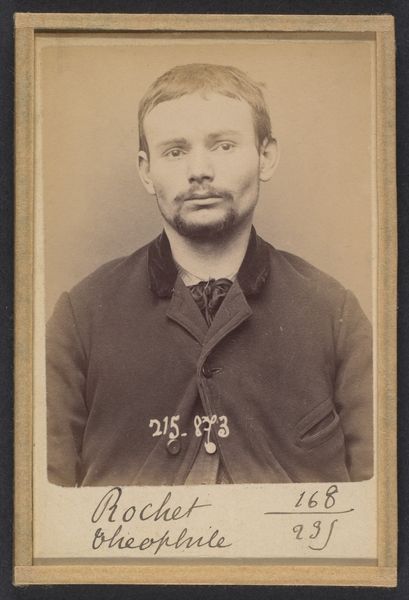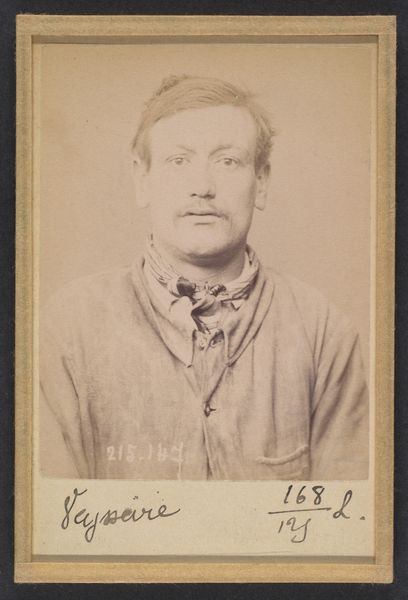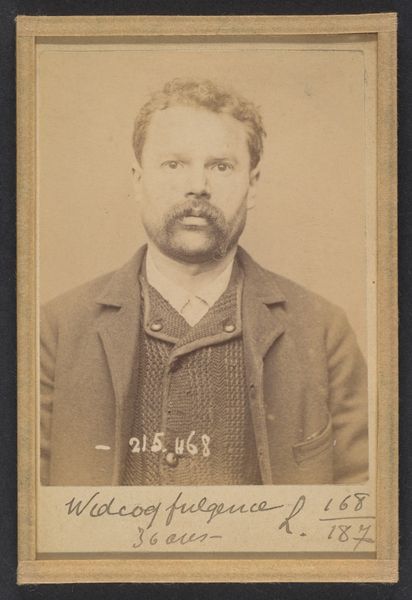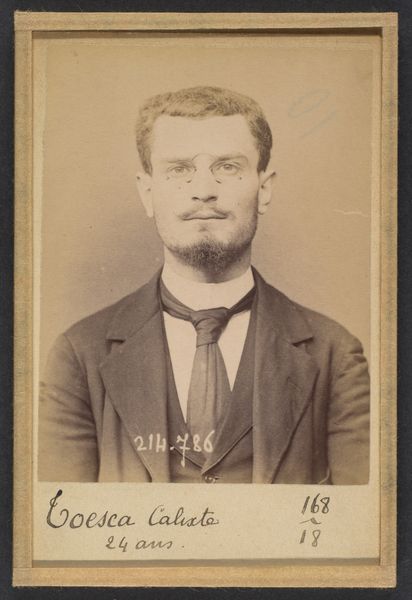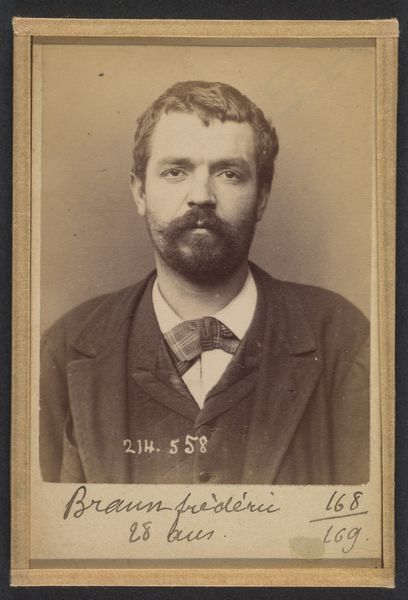
Guerlinger. Pierre. 28 ans, né le 31/5/65 à St-Avold (Moselle). Journalier. Anarchiste. 14/4/94. 1894
0:00
0:00
daguerreotype, photography
#
portrait
#
daguerreotype
#
photography
#
historical photography
#
history-painting
#
poster
Dimensions: 10.5 x 7 x 0.5 cm (4 1/8 x 2 3/4 x 3/16 in.) each
Copyright: Public Domain
Curator: Looking at this image, I’m struck by the directness of the gaze. There’s a certain vulnerability there, almost an invitation, despite the circumstances of the portrait. Editor: I agree, but what immediately grabs me is the tonality, the stark contrast between light and shadow, and the geometric qualities in the man's attire, creating a contained yet slightly unsettling composition. Curator: Indeed. This daguerreotype, taken in 1894, is by Alphonse Bertillon and currently held in the Metropolitan Museum of Art. It’s titled “Guerlinger. Pierre. 28 ans, né le 31/5/65 à St-Avold (Moselle). Journalier. Anarchiste. 14/4/94.” It’s a chilling piece of documentation. Bertillon was a French police officer and biometrics researcher who pioneered forensic photography. Editor: The clinical nature of a daguerreotype combined with those intense eyes is very powerful. The formal attire is juxtaposed in a way that both suggests the dignity of this man's past self, but is also a crude marker for the date this document was created. Curator: The piece invites us to consider the societal implications of identification and surveillance. This man was labeled as an "anarchiste"; the photograph freezes him within that specific sociopolitical identity and ideology. Consider the time: The late 19th century saw widespread anarchist movements clashing with increasingly powerful state authorities. Editor: Interesting; for me the medium of daguerreotype contributes immensely to the aesthetic impression that this individual has been frozen in a moment for posterity; Bertillon has given us not just information to read off the document, but to consider the face of history staring back at the present. Curator: Yes, the choice of medium has profound political consequences! This is more than just historical documentation. We're confronting issues of power, the criminalization of dissent, and how photographic technologies contribute to the construction of social control mechanisms. It prompts questions about agency and representation. Who has the power to capture and classify a life? And what are the repercussions? Editor: This analysis pushes me to view beyond merely technical brilliance; now, when viewing, I also can imagine seeing more of Guerlinger's humanity—defiance but vulnerability; no single element makes this photography, rather the collision. Curator: Indeed! We need to keep interrogating those systems of power embedded in our institutions and their aesthetic creations, like this very daguerreotype. Editor: A thought that remains as pertinent today, even while admiring it on museum walls or in digitized databases.
Comments
No comments
Be the first to comment and join the conversation on the ultimate creative platform.
